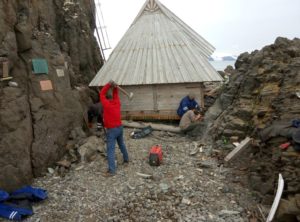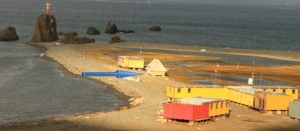C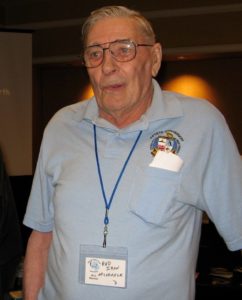 oming across a social network, I found an interesting page, set by someone set foot in Antarctica and left a tangible sign of what they did!
oming across a social network, I found an interesting page, set by someone set foot in Antarctica and left a tangible sign of what they did!
Here below is a piece of the a long and distinct period of history with a particular feature or characteristic; WAP have to be grateful to Mr. Patrick McCormick a veteran who spent a period of his youth in Antarctica and we are so happy to relive such great memories!
Patrick (pic aside) wrote: I wintered at McMurdo in 1956 and had a hand in building the “Our Lady of the Snows” Chapel. The following is an excerpt from my memoir describing its origin. The attached photo was taken in late December 1956. “There was one building that wasn’t exactly in the original plan.
The Chaplain, LT Father John Condit, universally known as Father John was a free spirited and very persuasive soul began to accumulate and stockpile “scrap” building material at end of the street near the base of Observation Hill. It was only a matter of time until he began recruiting, practically under threat of court martial, “volunteers” on their off time to put this “scrap” together to form a small Quonset Hut. Work began in mid February with some work, much to the chagrin of Mr. Canham, done on Navy time, but it was well into winter before completion. We had no plans, but with “Seabee Ingenuity” and “Can Do” spirit it turned into a chapel complete with altar, confessional, storage closet, steeple and belfry. After the port tanker ships had reached their winter berths,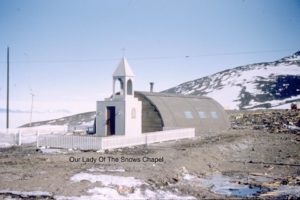 a bell from one of them somehow made its way up the hill to its place in the belfry. On May 6,1956, the Chapel was consecrated to Our Lady of the Snows and the bell consecrated to Saint Dismas, the good thief.”
a bell from one of them somehow made its way up the hill to its place in the belfry. On May 6,1956, the Chapel was consecrated to Our Lady of the Snows and the bell consecrated to Saint Dismas, the good thief.”
This is a genuine story and today, after more than 60 years, it revive here as a great example for everyone, certainly a source of pride made relive!
Patrick’s daughter, Maureen McCormick, add an unpublished piece of his father’s story: -My father, Patrick McCormick, whose birthday is today, did not mention that he was the first person baptized as a Catholic in that chapel, at age 18, and , therefore, the first person baptized in Antarctica (most likely!)! –
Well at this point, it takes me a bit of emotion and I just close the story with the comment came from Patrick: – I am more than happy to share those memories with anyone who will listen to an old man ramble-
TNX Patrick and Maureen McCormick … and Happy Birthday to this great old man rabble!

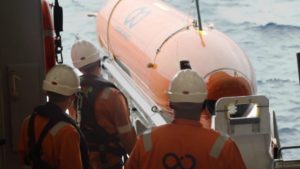 Antarctic hunt for Endurance wreck, ends after expedition loses undersea drone in “evil conditions”
Antarctic hunt for Endurance wreck, ends after expedition loses undersea drone in “evil conditions”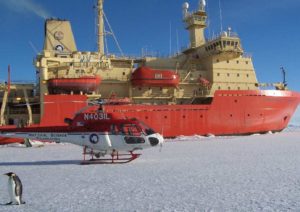 Acting on the advice of medical experts, National Science Foundation (NSF) officials have directed the NSF-chartered research vessel Nathaniel B. Palmer to put ashore a person in need of a level of care not available aboard the ship.
Acting on the advice of medical experts, National Science Foundation (NSF) officials have directed the NSF-chartered research vessel Nathaniel B. Palmer to put ashore a person in need of a level of care not available aboard the ship.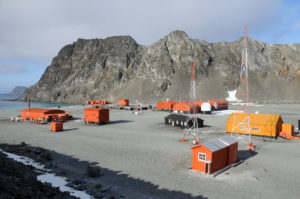 115 years of uninterrupted Argentine permanence in Antarctica!
115 years of uninterrupted Argentine permanence in Antarctica!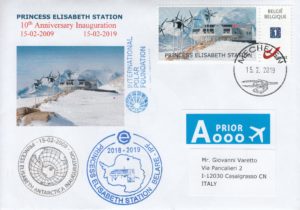 The link between Belgium and the Antarctic has always been strong since the first overwintering of the scientific expedition led by Adrien de Gerlache from 1897 to 1899, passing through the construction of the King Baudouin Base (
The link between Belgium and the Antarctic has always been strong since the first overwintering of the scientific expedition led by Adrien de Gerlache from 1897 to 1899, passing through the construction of the King Baudouin Base (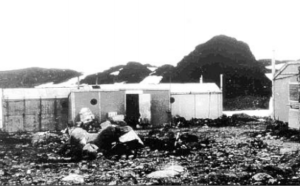 The Polish Academy of Sciences (PAN) has signed an agreement with Geoscience Australia establishing joint research in the Antarctic. The cooperation between the two countries includes the exchange of scientific thought and technology as well as the exchange of scientific data for the development of maritime and land research on the Antarctic continent. As a part of that agreement, the Polish Antoni Dobrowolski Station is set to be reactivated. Poland has two research stations in the Antarctic: the H. Arctowski Station in the Southern Shetlands, in constant use since 1977, and the Antoni Dobrowolski Station in the Bunger Oasis in eastern Antarctica, which has been unused since 1979.
The Polish Academy of Sciences (PAN) has signed an agreement with Geoscience Australia establishing joint research in the Antarctic. The cooperation between the two countries includes the exchange of scientific thought and technology as well as the exchange of scientific data for the development of maritime and land research on the Antarctic continent. As a part of that agreement, the Polish Antoni Dobrowolski Station is set to be reactivated. Poland has two research stations in the Antarctic: the H. Arctowski Station in the Southern Shetlands, in constant use since 1977, and the Antoni Dobrowolski Station in the Bunger Oasis in eastern Antarctica, which has been unused since 1979. The first Polish expedition to the Bunger Oasis in forty years is planned to leave in three to four years with the use of a modern Australian ice-breaker, the Nuyina.
The first Polish expedition to the Bunger Oasis in forty years is planned to leave in three to four years with the use of a modern Australian ice-breaker, the Nuyina.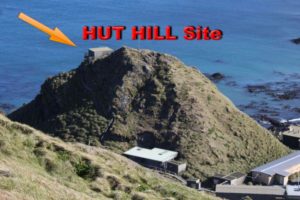 ve learnt something we didn’t know before, and the various point of view have been transformed into certainty. Just to sum up, a revision of Macquarie paragraph on the WAP-WADA Directory will be as follow:
ve learnt something we didn’t know before, and the various point of view have been transformed into certainty. Just to sum up, a revision of Macquarie paragraph on the WAP-WADA Directory will be as follow: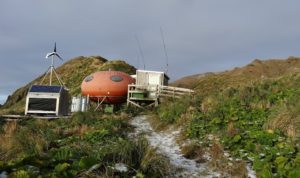
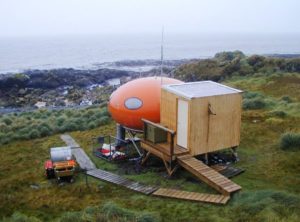
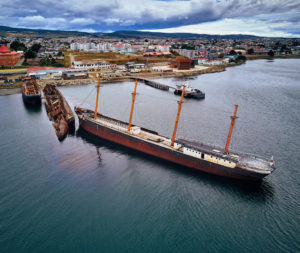 Faro Pontón Muñoz Gamerois a light house located at Punta del Rio, at the Punta Arenas Bay at 53° 10′ 33” South, 70° 55′ 6” West .
Faro Pontón Muñoz Gamerois a light house located at Punta del Rio, at the Punta Arenas Bay at 53° 10′ 33” South, 70° 55′ 6” West .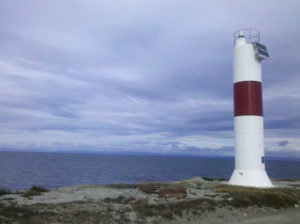 Built in 1928 at 53° 18′ 56” South, 70° 27′ 26” West the lighthouse Bahía Porvenir is a lighthouse located in Tierra del Fuego on Porvenir Bay on the Chilean Tierra del Fuego
Built in 1928 at 53° 18′ 56” South, 70° 27′ 26” West the lighthouse Bahía Porvenir is a lighthouse located in Tierra del Fuego on Porvenir Bay on the Chilean Tierra del Fuego ACA and on the WAP-LH Directory.
ACA and on the WAP-LH Directory.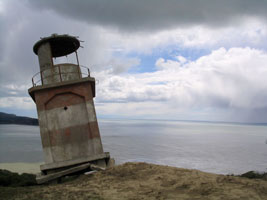 The lighthouse are located on the Cape of the same name, on an isolated mountain, very characteristic for its rounded shape that protrudes from the coastline. Its construction began on March 15, 1945, and during the month of December 1949 there was a seismic movement that caused a dangerous inclination of the tower, a situation that forced the removal of the luminous equipment and deactivated the signal. The building, still remains onsite and it will be activated for the first time in its history.
The lighthouse are located on the Cape of the same name, on an isolated mountain, very characteristic for its rounded shape that protrudes from the coastline. Its construction began on March 15, 1945, and during the month of December 1949 there was a seismic movement that caused a dangerous inclination of the tower, a situation that forced the removal of the luminous equipment and deactivated the signal. The building, still remains onsite and it will be activated for the first time in its history. 2) New LH at Cabo San Pablo, ARLHS ARG 074, WAP ARG-LH-NEW
2) New LH at Cabo San Pablo, ARLHS ARG 074, WAP ARG-LH-NEW 
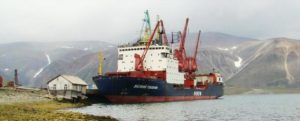 According to NCPOR the 38th Indian Antarctic Research Expedition will use the Icebreaker “Vasiliy Golovnin” for supply the Indian Scientific Bases in the Icy Continent. FESCO Transportation Group signed a contract with the National Centre for Polar and Ocean Research (NCPOR, Ministry of Earth Sciences, Government of India) for 2019 Antarctic Season.
According to NCPOR the 38th Indian Antarctic Research Expedition will use the Icebreaker “Vasiliy Golovnin” for supply the Indian Scientific Bases in the Icy Continent. FESCO Transportation Group signed a contract with the National Centre for Polar and Ocean Research (NCPOR, Ministry of Earth Sciences, Government of India) for 2019 Antarctic Season.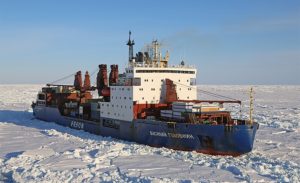 scientists are joining to this expedition aboard FESCO vessel. The ship did start its Antarctic voyage, under the command of Captain Iksan Yusupov, at the port of Cape Town last January 26th with members of the 38th IAE led by Dr Shailendra Saini.
scientists are joining to this expedition aboard FESCO vessel. The ship did start its Antarctic voyage, under the command of Captain Iksan Yusupov, at the port of Cape Town last January 26th with members of the 38th IAE led by Dr Shailendra Saini.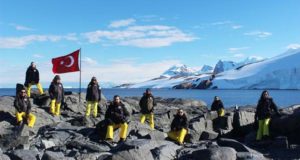 A Turkish expedition team, departed for Antarctica to set up a temporary scientific research base, arrived in the world’s coldest continent on Monday Feb. 4.
A Turkish expedition team, departed for Antarctica to set up a temporary scientific research base, arrived in the world’s coldest continent on Monday Feb. 4.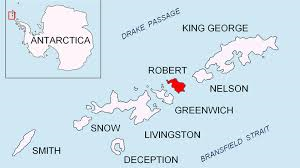 sources indicate Robert Island as a possible site, where in 2018, 28 Turkish researchers built the country’s first campsite.
sources indicate Robert Island as a possible site, where in 2018, 28 Turkish researchers built the country’s first campsite.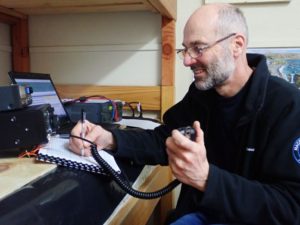 Macca Station Communications Tech, Norbert Trupp VK5MQ, is the Ham radio operator actually at Macquarie (WAP AUS-Ø8). He spends some of his spare time working other Hams worldwide operating as VKØAI from the shack set on Hut Hill, facing the East coast’s sea just in opposite site of the main building’s station of Macquarie.
Macca Station Communications Tech, Norbert Trupp VK5MQ, is the Ham radio operator actually at Macquarie (WAP AUS-Ø8). He spends some of his spare time working other Hams worldwide operating as VKØAI from the shack set on Hut Hill, facing the East coast’s sea just in opposite site of the main building’s station of Macquarie.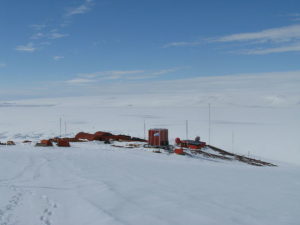 BaseBelgrano II was founded on February 5, 1979, to replace the Belgrano I (WAP ARG-Ø5). Subsequently, a third base, Belgrano III (WAP ARG-Ø7), was added, which was in operation from 1980 to 1984 when it was deactivated and evacuated on January 14, 1984
BaseBelgrano II was founded on February 5, 1979, to replace the Belgrano I (WAP ARG-Ø5). Subsequently, a third base, Belgrano III (WAP ARG-Ø7), was added, which was in operation from 1980 to 1984 when it was deactivated and evacuated on January 14, 1984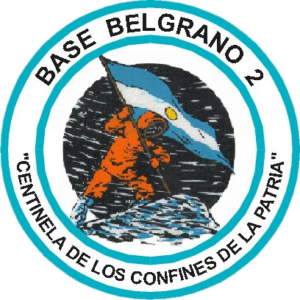 , due to the glaciological composition endangering personnel and equipment.
, due to the glaciological composition endangering personnel and equipment.
 Alexey Turkeev, RD1AV is the Season team leader at Vostok Station (WAP RUS-13). He is active in his spare time since last December 2018 and will be there until the end of February 2019 as RI1ANV , sometimes in tandem with Alex (Alexander Solodov, RX3ABI) signing RI1ANM. They operate SSB, CW and FT8
Alexey Turkeev, RD1AV is the Season team leader at Vostok Station (WAP RUS-13). He is active in his spare time since last December 2018 and will be there until the end of February 2019 as RI1ANV , sometimes in tandem with Alex (Alexander Solodov, RX3ABI) signing RI1ANM. They operate SSB, CW and FT8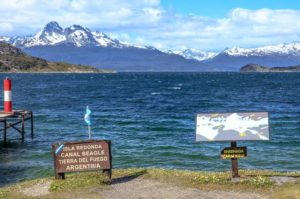 Redonda Island 54° 51′ 49″South, 68° 28′ 54″ West, is a small island territory at the mouth of Lapataia Bay, belonging to the Ushuaia Department of the Province of Tierra del Fuego, Antarctica and the South Atlantic Islands in the southern tip of Argentina.
Redonda Island 54° 51′ 49″South, 68° 28′ 54″ West, is a small island territory at the mouth of Lapataia Bay, belonging to the Ushuaia Department of the Province of Tierra del Fuego, Antarctica and the South Atlantic Islands in the southern tip of Argentina.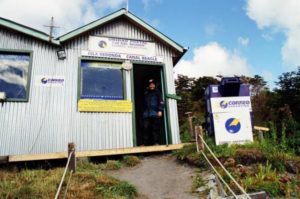 Hut residence of which, ruins still remain in site. Actually, a small detachment of the Naval Prefecture hosts 3 person and the site is equipped with a kitchen, dining room, two rooms and a radio room that serves to communicate with all ships and boats that navigate the area.
Hut residence of which, ruins still remain in site. Actually, a small detachment of the Naval Prefecture hosts 3 person and the site is equipped with a kitchen, dining room, two rooms and a radio room that serves to communicate with all ships and boats that navigate the area.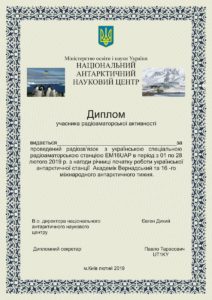 EM16UAP, Ukrainian Antarctic Program (WAP 295) is a special call sign on the occasion of the start beginning of the work at the Ukrainian Antarctic Station Academik Vernadsky (WAP UKR-Ø1), which began its activities in Antarctica on February 6, 1996 and now is joining the 16th International Antarctic Week (AAW). QSL via UT1KY
EM16UAP, Ukrainian Antarctic Program (WAP 295) is a special call sign on the occasion of the start beginning of the work at the Ukrainian Antarctic Station Academik Vernadsky (WAP UKR-Ø1), which began its activities in Antarctica on February 6, 1996 and now is joining the 16th International Antarctic Week (AAW). QSL via UT1KY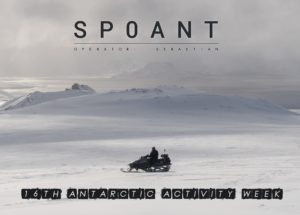 Another ”New Entry” in the 16th AAW is Sebastian Gleich SQ1SGB who has got his AAW callsign as SPØANT (WAP-298) and will join the International Antarctic Activity Week. QSL via SQ1SGB.
Another ”New Entry” in the 16th AAW is Sebastian Gleich SQ1SGB who has got his AAW callsign as SPØANT (WAP-298) and will join the International Antarctic Activity Week. QSL via SQ1SGB.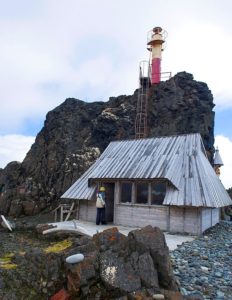
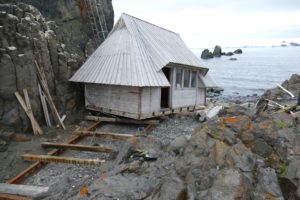 s a “Turist house”! Upon being established, its location was barely a dozen meters from the sea. Now, during high tide, it is less than a meter away. That little house, was build in 1998 from wood waste after the general rebuild of the Station. The main builders was Zubek brothers and Suszczewski, originator and chief builder of Arctowski.
s a “Turist house”! Upon being established, its location was barely a dozen meters from the sea. Now, during high tide, it is less than a meter away. That little house, was build in 1998 from wood waste after the general rebuild of the Station. The main builders was Zubek brothers and Suszczewski, originator and chief builder of Arctowski.